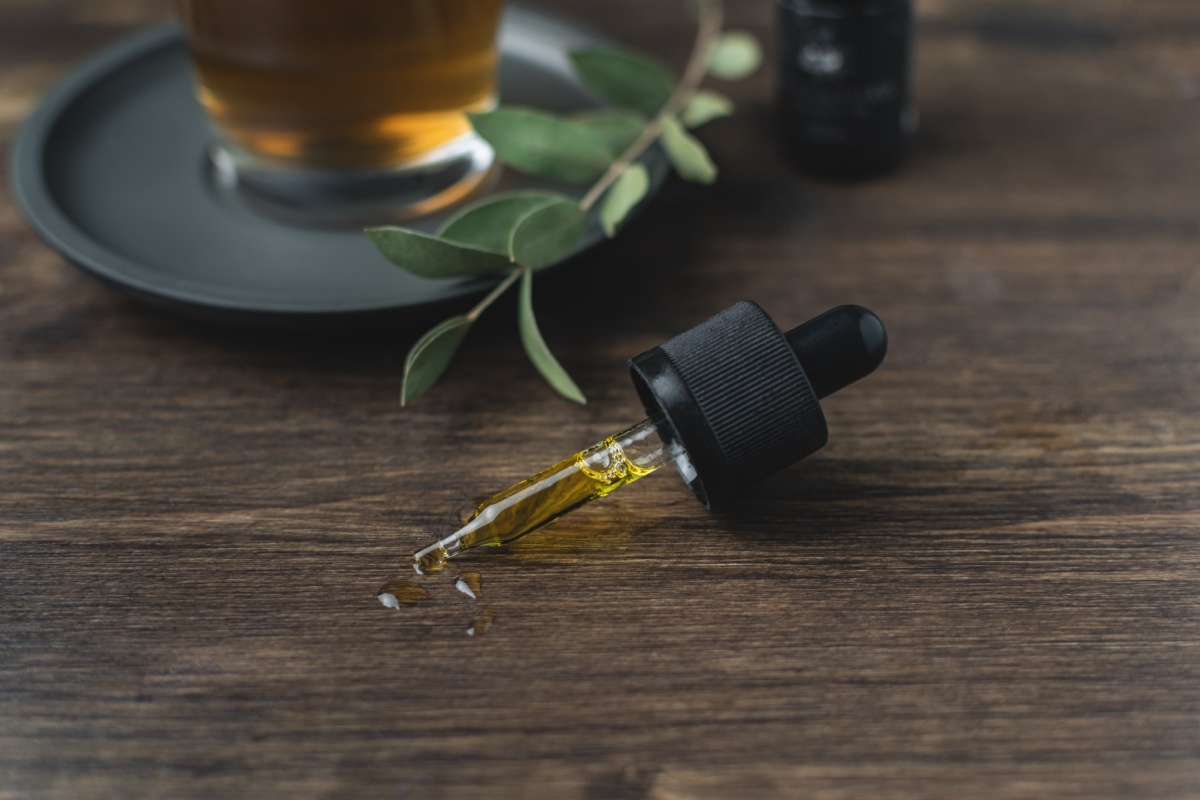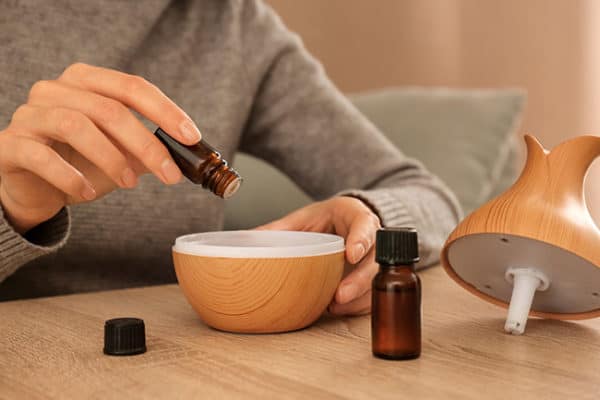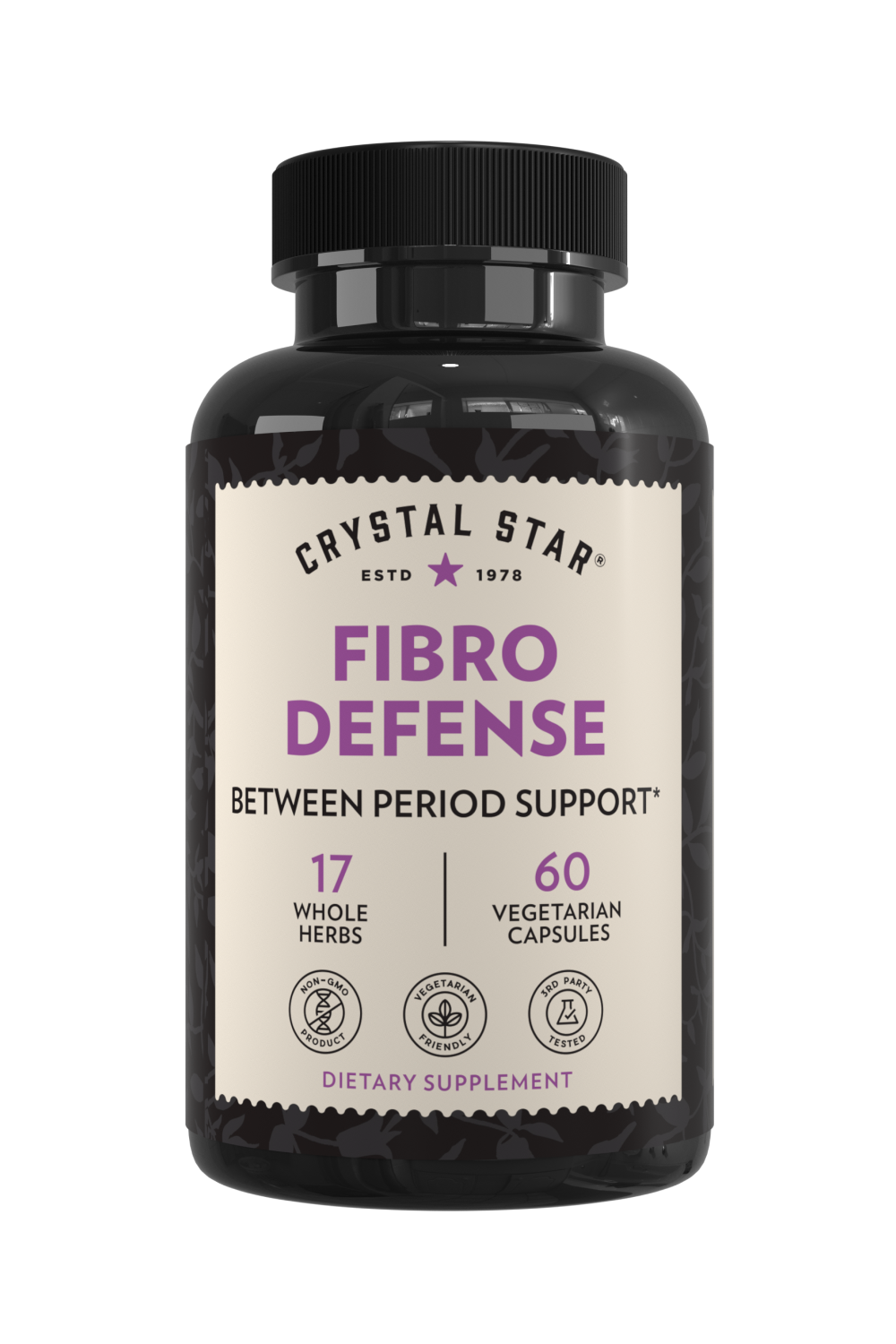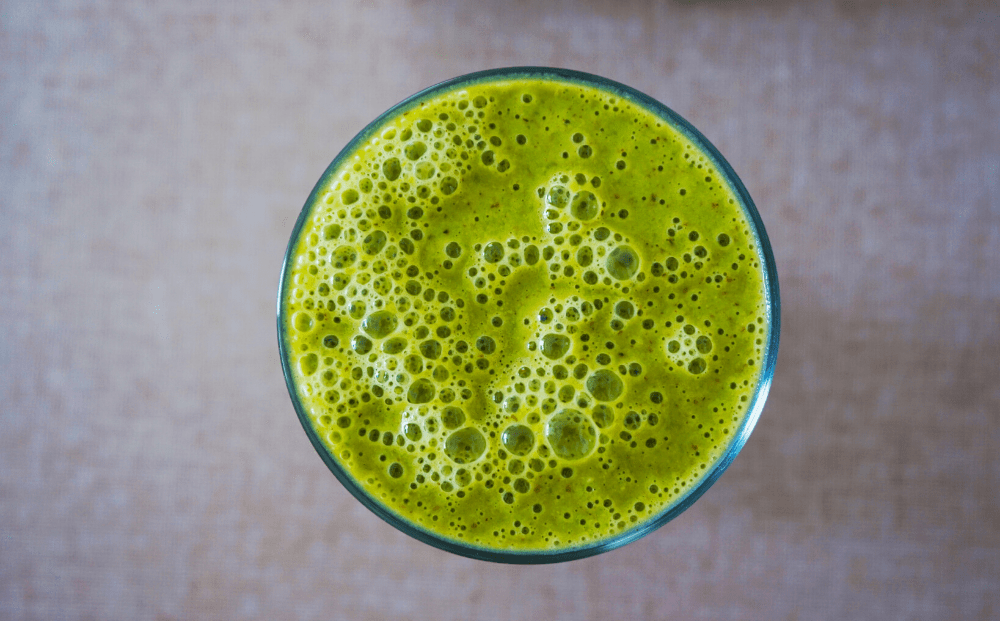
Flu Season Is Here. Can Essential Oils Help?
It’s fall and while Starbucks hypes the return of the Pumpkin Spice Latte, the rest of us are loading up on hand sanitizer and side-eyeing sneezing coworkers.
Spending more time indoors means spending more time exposed to viral illnesses like cold and flu. For the flu, annual vaccines may lower your risk of contracting it and Tamiflu can reduce symptoms, but there’s not much we can do for the common cold—which is caused by any of 160 different strains of rhinovirus.
The good news?
The past fifteen years of research into aromatherapy and essential oils have yielded some promising results when it comes to fighting viruses and bacteria. Some essential oils have antiviral properties, meaning that they can kill or weaken cold and flu viruses, or prevent these viruses from attaching to human cells. Read on to learn what essential oils are and the best ways to use them this cold and flu season.
What Are Essential Oils?
Essential oils are highly concentrated plant extracts. They can be obtained through steam distillation, cold pressing (usually the method of choice for citrus oils), or CO2 extraction, a form of solvent extraction that doesn’t leave any residue or alter the chemical structure of the oil.
Essential oils have been used in medicine, perfume, and religious rituals for thousands of years. Relegated to the realm of “alternative medicine” in the 20th-century, evidence over the past two decades suggests that essential oils and aromatherapy may have powerful healing properties across a range of body systems.
Studies have documented anti-anxiety and improved sleep effects of inhaled essential oils (known as aromatherapy), as well as improved wound healing with topical application and improvements in memory and cognitive function in Alzheimer’s disease patients.[1][2][3] One 2017 study found that navel orange essential oil may even have anti-cancer properties.[4]
Which Essential Oils Fight Cold and Flu?

Tea tree, eucalyptus, peppermint, and bergamot (a type of citrus) are star oils when it comes to managing respiratory viruses.
One 2016 study found that a component of eucalyptus oil protected mice from influenza virus, and a 2012 study found that both aerosolized eucalyptus and tea tree oil deactivated airborne flu virus within five-to-fifteen minutes.[5]
A detailed 2014 study of the anti-flu effects of essential oil vapors concluded that eucalyptus (Eucalyptus globulus) and bergamot (Citrus bergamia) were the most potent (note that the samples in this study did not include peppermint or tea tree).[6]
Peppermint also has antiviral properties and like eucalyptus oil can function as a decongestant when inhaled.
And while there’s not a lot of information linking specific essential oils to specific cold-causing rhinoviruses, in general, oils that fight flu stand a pretty good chance against colds as well.
How Can You Use Essential Oils To Help Prevent Cold and Flu?
For respiratory viruses, inhalation is the best delivery system for essential oils.

Except for cinnamon and clove bud oil, which are respiratory irritants, many high quality oils (like doTERRA brand) are safe for adult use in nebulizers and ultrasonic diffusers, which atomize essential oils into micro-particles that are subsequently diluted in the air.
If you don’t want to invest in an ultrasonic diffuser, adding 15-20 drops of virus-fighting oil to your furnace filter is a quick way to spread the benefits to your whole house. The fragrance (and virus-busting properties) should last about a month before you need a refresh.
Oil burners are another low-cost option. Oil burners use a tea candle to heat essential oils added to water or a carrier oil. However oil burners aren’t as good at dispersing essential oil vapor and heating the oil may alter its chemistry, rendering it less effective.
Another simple way to inhale essential oils? Place 1-2 drops on a tissue. Hold the tissue a few inches under your nose and wave it back and forth between your nostrils for two or three breaths. This method probably won’t do much to prevent infection, but can soothe symptoms and potentially fight existing infection.
Whatever you do, just don’t inhale straight from the bottle—more is not better when it comes to essential oils.
How Do You Use Essential Oils Safely?
Always dilute essential oils for topical use
While concentrated plant oils may sound innocuous, they’re quite strong. The downside of this potency is that essential oils can cause side effects if used improperly.
The most noticeable of these potential side effects is skin irritation, but in theory, it’s also possible for essential oils to cause systemic side effects if they’re over-applied.
When you apply essential oils to your skin, a portion of that oil is absorbed into the deeper layers of your skin and your bloodstream. That’s because skin is semi-permeable, a quality that also makes treatments like hormone and nicotine patches effective. Systemic effects would vary depending on the type of essential oil, but there isn’t currently enough research to pinpoint exactly how they’d manifest.
So basically, using undiluted topical essential oils is definitely bad for your skin, and probably bad for other organs or body systems.
The solution? Dilution (and patch testing).
Dilute at a ratio of .5% for children ages six-to-ten and 1% for older children, the elderly, facial application, or those with sensitive skin. All other adults should not exceed a concentration of 2%.
If you’re thinking “what the math?”, don’t worry—here’s a handy dilution calculator.

For kids and those with sensitive skin, diluted chamomile is a great skin-friendly oil to start with. Just be sure to avoid applying citrus oils to the skin since they can increase sensitivity to sunlight, leading to burns and rashes.
Once you’ve diluted your oil, test it out on a one-inch square on the inside of your forearm and wait 24 hours to make sure you won’t have a skin reaction.
Safety for Infants, Toddlers, and Pregnant or Breastfeeding Women

We recommend staying on the safe side and avoiding essential oil use with children under four.
Infants and toddlers can have mild-to-severe respiratory reactions to diffused essential oils, and even older children should be monitored for headaches, respiratory problems, nausea, or rashes.
Pregnant women should wait until the second trimester to diffuse any essential oils since some, like clary sage, may induce contractions, or otherwise affect your baby in its early development.
In your second and third trimesters, try diffusing high-quality citrus oils like sweet orange or lemon essential oil, or soothing chamomile, which all have good safety records when diffused into a vapor.
Never Take Essential Oils Internally
Essential oils are not intended for internal use—they can be toxic when ingested. If you or your child accidentally ingest an essential oil, call the poison control center immediately.
Know Your Oils
Diffused or nebulized essential oils may smell nice, but they can affect your breathing, blood pressure, nervous system, mood, and in some cases, your metabolism.[7] Do your research before purchasing a particular oil to make sure its effects align with your desired outcome.
For example, if you’re on a road trip and have a bout of car sickness, inhaled peppermint oil can help alleviate your symptoms. But peppermint oil also has stimulating effects and may also make it harder to sleep once you arrive at your destination.[8] In that case, calming sweet orange or sleep-promoting lavender oil might be a better choice—both of these oils are also anti-nausea.
Essential Oil Controversy —Quality Matters
Essential oils aren’t regulated by the FDA and are notoriously susceptible to adulteration by suppliers and distributors looking to boost profits.
In fact, a recent investigation by Consumers Advocate found adulteration in several popular essential oil brands. (You can read the full report and CA’s brand recommendations here.)
Lavender essential oil (Lavandula angustifolia), for example, is often diluted with similar-smelling but much less expensive lavandin (Lavandula × Intermedia) and sold as pure lavender. Other oils may be diluted with synthetic chemicals, which most commonly occurs with citrus oils.
Tricks like this are common among expensive or popular essential oils, are hard to catch, and can occur at any point in the supply chain. So why does the purity of an essential oil matter?
A common misconception is that essential oils work through our subjective sense of smell. That is, we might think that if it looks like orange oil and smells like orange oil it probably has the same effect as true orange oil. But research over the past two decades has shown that the compounds in essential oils have an objective effect on our bodies.
In other words, adulteration can decrease, eliminate, or alter an essential oil’s therapeutic qualities, even if the final product smells the same.
Essential oils have such specific effects on our cells that one researcher has proposed that studying the body’s reaction to an oil can indicate whether that oil is pure or not. That is, when it comes to essential oils the body can serve as a “physiological polygraph”.[9]
You should also watch out for absolutes, which are sometimes extracted using hexane and may contain trace amounts of it. Hexane is derived from crude oil and according to the EPA, can affect the central nervous system when inhaled leading to dizziness, headache, and nausea.[10]
Absolutes are usually made from flowers that don’t respond well to steam distillation, like jasmine and rose. Because absolutes are heavier than essential oils, they can be a little tougher to work with. They may clog diffusers and nebulizers, so may be a better choice for an oil burner. Some brands do disclose what method of solvent extraction they use, so it is possible to avoid hexane contamination.
Are Essential Oils Endocrine Disruptors?
Maybe. We don’t know if topical application of lavender and tea tree oil, even at dilutions deemed “safe,” are okay for prepubescent children. That’s because some research links topical lavender and tea tree oil to breast development in prepubescent boys and early breast development in girls.[11][12]
Vaporized essential oils, however, have not been linked to any endocrine disrupting outcomes. So if you have kids over four at home, a little bit of bergamot or lavender in your diffuser or furnace filter should be fine.
Essential Oils, In Conclusion

Eucalyptus, tea tree, peppermint, and bergamot essential oils are the most effective essential oils for fighting respiratory viruses when diffused into the air. You can purchase special aromatherapy diffusers or nebulizers, heat your oils using an oil burner, or place a few drops on your furnace filter to spread the benefits to the whole house.
Essential oils should always be diluted when applied to the skin, and it’s probably best to avoid topical application in prepubescent children due to ongoing research into possible endocrine-disrupting side effects. Avoid using essential oils for infants and toddlers, and pregnant or nursing women should exercise special caution, particularly in the first trimester of pregnancy.
Researchers recently announced that they’ve discovered a way to stop some cold viruses from reproducing in mice and human cells.[13] It’s a promising breakthrough, but scientists have yet to determine whether it will translate into a drug that can safely treat the common cold. If it does, the approval process could take an additional five-to-ten years.
In the meantime, the tried-and-true advice to wash your hands and cover your mouth stands, and essential oils can be a powerful complementary therapy when you’re trying to dodge cold and flu, or when you’re fighting off an existing infection. They can also be a wonderful way to take charge of your health, but it’s important to educate yourself on the properties of each particular oil as well as best safety practices before you begin experimenting.
References:
[1] https://www.ncbi.nlm.nih.gov/pmc/articles/PMC4880962/
[2] https://www.ncbi.nlm.nih.gov/pmc/articles/PMC6334595/
[3] https://www.ncbi.nlm.nih.gov/pmc/articles/PMC6116079/
[4] https://www.ncbi.nlm.nih.gov/pmc/articles/PMC6152265/
[5] https://www.tandfonline.com/doi/full/10.1080/02786826.2012.708948
[6] https://pdfs.semanticscholar.org/4067/6b068d7a2f0f549b7354998236e03da925ca.pdf
[7] https://www.ncbi.nlm.nih.gov/pmc/articles/PMC3659644/
[8] https://www.ncbi.nlm.nih.gov/pmc/articles/PMC3607906/
[9] https://www.roseman.edu/2018/10/03/roseman-university-researchers-study-doterra-essential-oils/
[10] https://www.epa.gov/sites/production/files/2016-09/documents/hexane.pdf
[11] https://www.medpagetoday.com/reading-room/endocrine-society/diabetes/77710
[12] https://www.niehs.nih.gov/health/topics/agents/essential-oils/index.cfm








